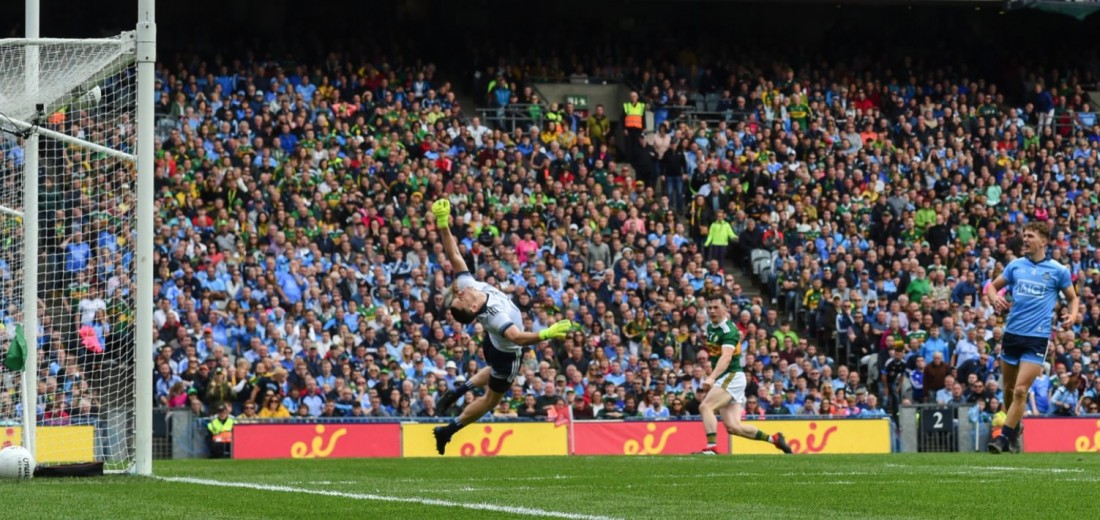Last week was the beginning of a seven-article series focusing on my Levelled Progression model.
It focused on skill acquisition and how skills are learned as textbook skills first before they are progressed into performance skills by the goalkeeper. Completing the five stages at this initial level allows both goalkeeper and coach to implement any skill they wish to instil into their performance.
Once the goalkeeper has learned the skill thoroughly and progressed it further to a performance level, they will then move to the next stage of the progressional model. This level is a continuation of the first level with added complexity introduced to the base techniques. With the skill having been mastered by the goalkeeper the added difficulty is now required in order to reinforce and improve the goalkeeper’s ability to perform the skill. The next level this model is:
LEVEL 2: PERFORM THE SKILL VERY WELL AND AT SPEED [11-12yrs]
The first stage of increasing the complexity of the learned skill is to increase the speed at which it is performed. By increasing the speed at which the skill is performed it forces the goalkeeper into an environment not yet experienced. By speeding up the goalkeeper’s movements, their cognitive function, decision making, and motor function must also increase in speed.
There is an old adage “Where the mind goes, the body must follow,” meaning any improvements that are made psychologically by a goalkeeper will in turn improve the goalkeeper physically as well. Performing the skills at a higher intensity will improve the goalkeeper mentally and increase the rate at which they can make decisions.
The goalkeeper’s proprioceptive ability will also improve which will allow their nervous systems to generate feedback faster so that the brain can make more informed decisions quicker. This part of the goalkeeper’s game is called their ‘Speed of Thought.’
As a goalkeeper begins to improve their Speed of Thought, they begin to make decisions at a faster rate. What this will look like on the training pitch will be a more error-ridden session. The goalkeeper will make more technical mistakes in their skills than usual. This is not because they have gotten worse or regressed in that skill, but because their mind is working at a faster rate than their body can keep up with. It will look careless and sloppy in nature but in all honesty, this is normal practice for all skill development.
How fast a goalkeeper can perform their learned skills is called their ‘Speed of Play.’ It primarily deals with how quickly the goalkeeper can physically perform the skill after their brain has actioned the decision. As mentioned before, if a goalkeeper’s Speed of Thought is operating at a higher intensity than their Speed of Play then mistakes or indecision will occur. But, will regular training at higher intensities it allows the goalkeeper’s Speed of Play to catchup.
Also by allowing the goalkeeper to train with their ‘Training Brain’ (allowing for mistakes), it provides the environment for the ‘keeper to be able to get their Speed of Thought and Speed of Play working in unison with each other and therefore improving overall performance. When the speed at which a skill is performed increases, the first aspect that improves is the goalkeeper’s Speed of Thought. Continuing to train at this higher intensity and increased rate of decision making then forces the goalkeeper’s body to respond and improve its Speed of Play accordingly to match the increase in cognitive function.
It is important for the goalkeeper and the coach to also understand that in order to improve the speed at which a skill is performed, the physical attributes of the goalkeeper must also be improved also. Discussions surrounding their strength and conditioning can be commenced and the goalkeeper could start very basic bodyweight exercises that will increase their physical output. It will also be essential to start the goalkeeper on a program that will increase their speed, agility and quickness. By running these programs parallel to the skills training, it will assist the goalkeeper in performing their skills at that higher intensity.
For the coach, the important thing to remember is whenever they are creating sessions for either skills or physical gains, to include adequate rest periods. Always allow the goalkeeper enough rest to the point that they feel they will be able to complete the current exercise just as they have done in the initial set.
New Zealand rugby player Sonny Bill Williams would admit he was never the quickest or fittest on the team, but the results of his maximum output were better than anyone else of the team.
Whenever he trained on his skills, he would complete them at the maximum intensity that he possibly could. He would rest between sets for as long as he needed until he felt ready to exert maximum output again. Whether it be two minutes or ten minutes, he took the rest he needed.
Once a textbook skill is learned, naturally the goalkeeper will develop it into a performance skill through regular practice both structured and sporadic. Once the goalkeeper has developed the performance skill and mastered its execution, the next stage of developing the skill is to increase the speed at which is performed. This improves the psychological and physical abilities of the goalkeeper and therefore improves their overall ability as a whole as well.
Want more advice for goalkeepers? Contact Patrick now.
Email: pmgoalkeeping@hotmail.com
Facebook: @MSoG11
Twitter: @MorSchGk
Receive quality journalism wherever you are, on any device. Keep up to date from the comfort of your own home with a digital subscription.
Any time | Any place | Anywhere












